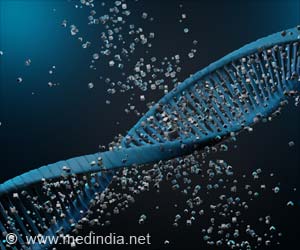Scientists at the Georgia Institute of Technology have discovered a process by which gene amplification could be stopped in fatal-disease conditions like tumour growth and cancer.
Scientists at the Georgia Institute of Technology have discovered a process by which gene amplification could be stopped in fatal-disease conditions like tumour growth and cancer.
Using yeast as a model organism, researchers have found that the location of a hairpin-capped break relative to the end of the chromosome will determine the fate of the amplification process.Gene amplification is the increase in copy number of a particular piece of DNA and is a hallmark of tumor cells. Amplified genomic segments are frequently manifested in one of two cytologically recognizable forms. Double minutes are extrachromosomal segments of amplified DNA. Homogeneously staining regions are amplified intrachromosomal segments forming large genomic regions. Some strategies of pharmaceutical research in cancer prevention and treatment could involve curbing cancer development via restricting gene amplification. The first step towards achieving this is to discover the rules that govern whether an amplification event is a double minute or a homogenously-staining region.
It’s known that regions of chromosomes that are prone to amplification have palindromic sequences of DNA, which are weak places where the chromosome can break. These palindromic sequences can be naturally found in human genome. The distribution of such sequences can vary from one individual to another. Researchers at the Georgia Institute of Technology have discovered that a particular type of DNA break, a hairpin-capped double strand break, induced by these palindromic sequences, is a precursor to amplification.
‘We have a developed a system in yeast which would mimic the situation in human cancer cells wherein oncogenes might be located next to palindromic sequences. Using this system we have discovered the rules that determine how double minutes or homogeneously staining regions can be generated,’ said Kirill Lobachev, assistant professor in Georgia Tech’s School of Biology.
‘If these rules operating in yeast can be extended to higher eukaryotes then we can propose that if the oncogene is located between the hairpin-capped break and the telomere, then the amplification event will result in a double minute. If the break occurs between the oncogene and the telomere, then the amplification would yield a homogenously-staining region.’ adds Vidhya Narayanan a Ph.D. student in Kirill Lobachev’s lab and first author of the study.
The findings can help researchers understand the cause of cancer in diseased individuals and also to potentially identify individuals who might be prone for cancer.
Advertisement
Source: Eurekalert






